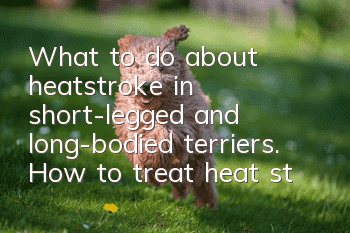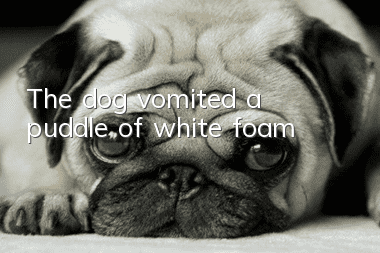What to do about heatstroke in short-legged and long-bodied terriers. How to treat heat stroke in short-legged and long-bodied terriers.

What should I do if my short-legged and long-bodied terrier has heat stroke? Dogs are different from people in that their skin does not have sweat glands, so dogs are prone to heat stroke under the influence of high temperature, high humidity and strong sunlight! So what should we do if we find that dogs have heat stroke? What to do?
1. Causes of heatstroke in dogs
Canine heat stroke usually occurs in the following situations.
1. Activities under strong sunlight, such as walking, training, and playing.
2. Leaving the dog in a closed room, in a dog cage, or in a car for too long may cause heat stroke due to excessive temperature, poor ventilation, or lack of drinking water.
3. Dogs that are obese, have heart disease, have thick coats, and lack exercise are prone to heatstroke.
2. First aid for dog heatstroke
1. Immediately move the sick dog from high temperature or sun exposure to a cool and ventilated place to rest or lie down. Elevate your feet while resting to increase blood supply to the brain.
2. Take a bath with cold water, cover the body with a wet towel, and put an ice pack on the head to cool down. Be careful not to let the water temperature be too low, because too low a water temperature will cause severe contraction of the surrounding blood vessels, which will not achieve the heat dissipation effect. , you can also use alcohol to wipe the body surface to promote heat dissipation.
3. Heat stroke is prone to laryngeal edema. You should pay attention to the breathing situation and straighten the dog's neck at any time to make it breathe smoothly.
4. Give the sick dog oral saline in a timely manner.
5. During the emergency treatment, pay attention to the body temperature of the dog at all times. When the body temperature drops to 38 degrees, all heat dissipation actions should be stopped to avoid excessive heat dissipation and hypothermia.
6. If vomiting occurs, auxiliary tools (such as bamboo chopsticks, pens, etc.) should be used to carefully remove the vomit from the mouth, and the head should be turned downward to prevent the dog from inhaling the vomit into the trachea, causing inhalation pneumonitis.
7. If the dog remains unconscious, contact the animal hospital as soon as possible and send it to the hospital for treatment immediately.
- Why do dogs eat their own children?
- What causes vomiting in puppies? Owners cannot take it lightly!
- How to train a dog? How to train dog behavior!
- What’s wrong with dogs’ loose stools?
- Precautions for novices in feeding puppies, a must-read for every dog owner!
- Dangers of shaving dogs When can I shave my dog?
- How sensitive is a dog’s sense of smell? How many times is a dog’s sense of smell that of a human?
- What is the correct way to deworm dogs externally?
- What are the symptoms of a cold in dogs and how should they be treated?
- The appearance characteristics and training methods of Afghan Hound_How much does one cost?



